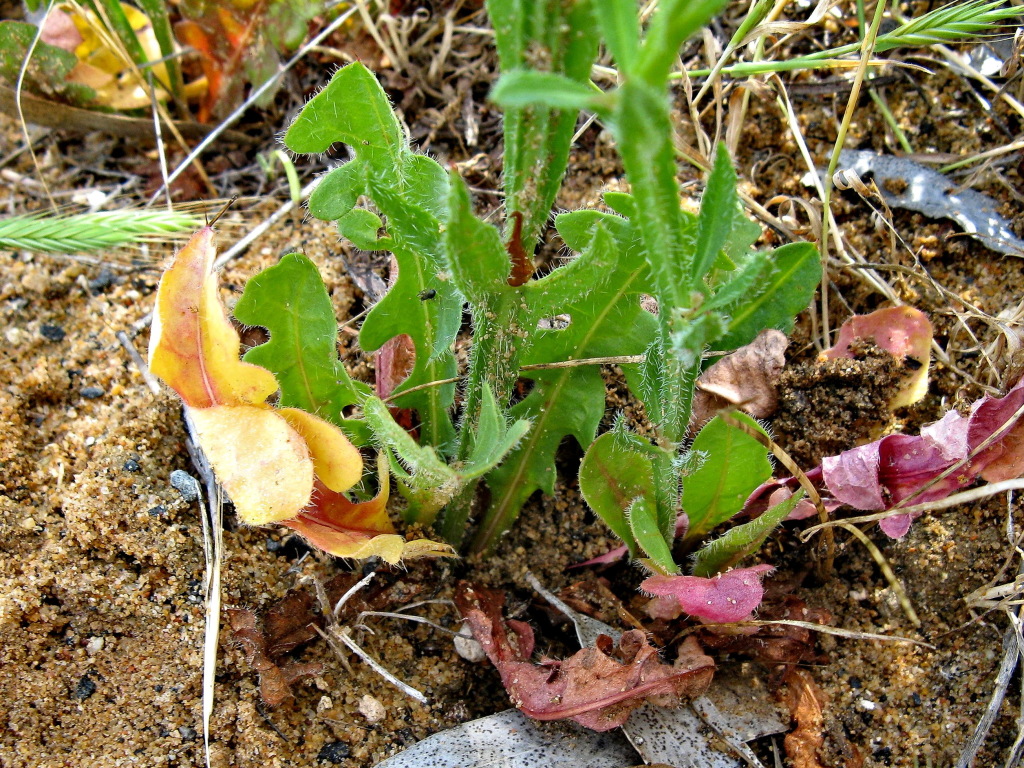Limonium sinuatum
(L.) Mill Wavyleaf Sea-lavenderSparsely to densely hispid perennial with erect flowering stems, 15–60 cm high, winged from near base, with 3 linear lobes at each node. Leaves in 1–several rosettes at base; lamina with 3–7 rounded lobes along each side, 3–20 cm long, 5–45 mm wide. Inflorescence of several secund spikes in a dense corymb; spikes ascending to erect, 5–12 mm long, each subtended by a broadly 3-winged branch 5–45 mm long; spikelets mostly 2-flowered, c. 4–9 per spike; outer and middle bracts subequal, lanceolate, 4–7 mm long, narrowly acuminate at apex, scarious; inner bract firm, partly green, c. 7 mm long, with 2–3 ascending spines; calyx 10–14 mm long, bright blue to purple (rarely white or pale mauve), the tube c. 7 mm long, the limb 7–9 mm diam., hardly lobed but margins more or less crenate; corolla not or only slightly longer than calyx, obscurely lobed, yellowish or pink. Capsule circumsciss near apex; seed fusiform, 3–4 mm long, dark brown. Flowers Oct.–Mar.
LoM, MuM, Wim, GleP, VVP, VRiv, RobP, MuF, GipP, OtP, Gold, CVU, DunT. Also naturalised WA, SA, NSW, Tas. Native to the Mediterranean region. Mainly a roadside weed of dry sandy ground in warmer districts of northern Victoria, uncommon in south (e.g. Mt Wallace, Melbourne Cemetery).
Grown for ornament and cut flowers.
Walsh, N.G. (1996). Plumbaginaceae. In: Walsh, N.G.; Entwisle, T.J., Flora of Victoria Vol. 3, Dicotyledons Winteraceae to Myrtaceae, pp. 296–299. Inkata Press, Melbourne.
 Spinning
Spinning




